Physical Address
304 North Cardinal St.
Dorchester Center, MA 02124
Failed rotator cuff repair includes patients with recurrent tears; however, it also includes those patients who have not achieved adequate pain control or improved functional outcomes following the index procedure. There are intrinsic and extrinsic factors that contribute to persistent symptoms. The intrinsic factors are specific to the rotator cuff itself and a recurrent tear. The extrinsic factors include persistent biceps symptoms, symptomatic acromioclavicular (AC) joint arthritis, glenohumeral arthritis, unrecognized instability, and persistent subcoracoid impingement.
Arthroscopic or open rotator cuff repair involves the reattachment of the tendinous rotator cuff complex to the appropriate tuberosity insertion. However, it also includes managing any other additional pathology (i.e., AC joint arthritis, any causes of impingement, biceps pathology, adhesive capsulitis, glenohumeral arthritis, implant complications, poor bone quality, and so forth) not addressed at the index procedure.
History of traumatic event
Gradual or insidious onset
Pain that interferes with or disrupts sleep
Pain with overhead activities
Weakness
Lateral shoulder pain
Comorbidities: tobacco use, diabetes, inflammatory arthritis with immune modulators
Inspection:
Location of prior scars
Atrophy (deltoid, supraspinatus fossa, infraspinatus fossa) ( Fig. 33.1 )
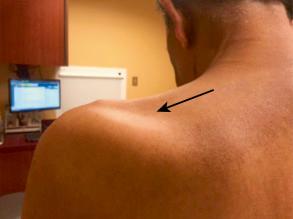
Deformity of biceps (Popeye deformity)
Palpation:
Pain with palpation of the AC joint or biceps tendon
Distal neurovascular exam
Active and passive range of motion (ROM): discrepancies between the two
Strength (forward elevation, external rotation, internal rotation)
Special testing (see Figs. 33.2-33.8 for detailed description):
Lag signs (internal rotation, external rotation)
Drop arm
Impingement signs (Neer sign, Hawkins-Kennedy test) ( Figs. 33.2 and 33.3 )
Lift-off ( Fig. 33.4 )
Belly press ( Fig. 33.5 )
Speed test ( Fig. 33.6 )
Yergason test ( Fig. 33.7 )
Active compression ( Fig. 33.8 )
Hornblower’s sign
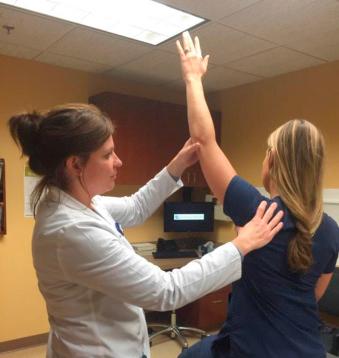
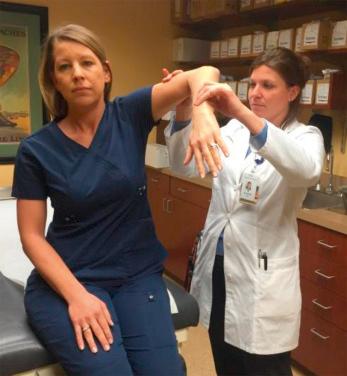
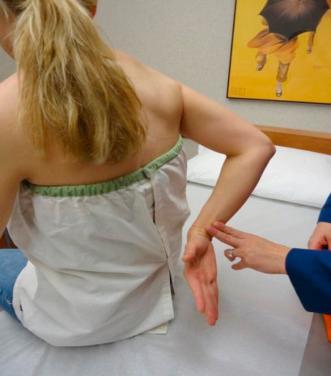
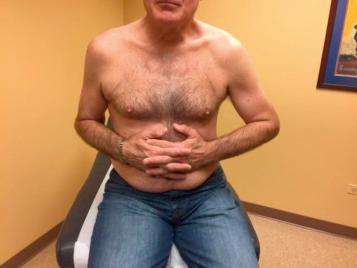
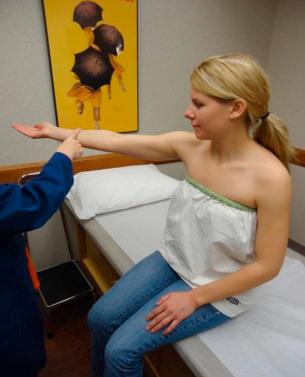
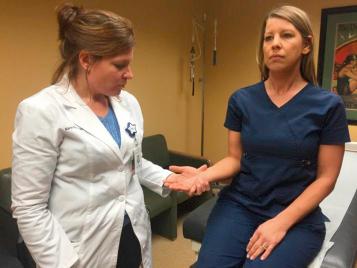
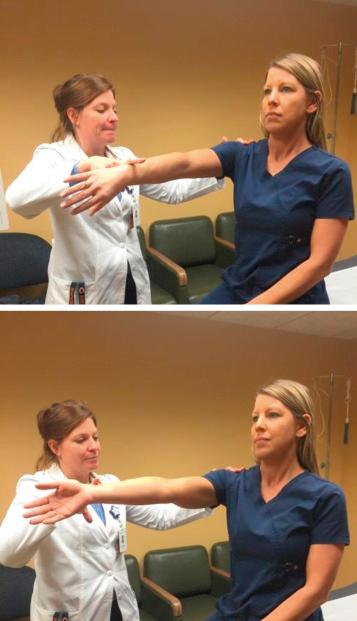
ROM of the cervical spine with Spurling test
Standard four x-ray views: Grashey anteroposterior (AP) view, outlet view, Zanca view, and axillary view ( Fig. 33.9 and 33.10 ).
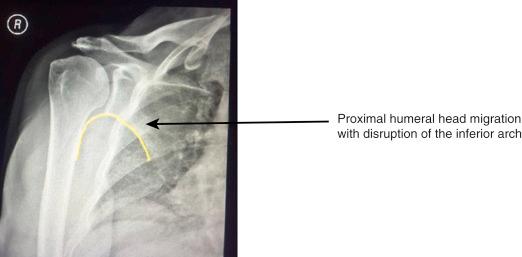
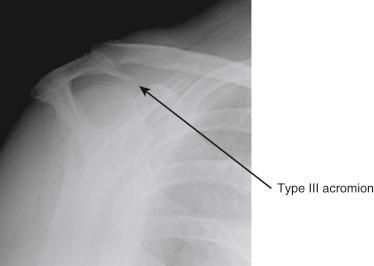
Magnetic resonance (MR) arthrogram: high-field magnet preferred to open low-field magnet.
Computed tomographic arthrogram: if MR is contraindicated.
Plain MRI is acceptable if gadolinium is contraindicated.
Evaluate for hardware position, integrity of rotator cuff repair, additional pathology (i.e., edema at the AC joint, subcoracoid impingement, biceps instability, superior labral pathology), and atrophy using the Goutallier classification.
Living with the symptoms.
Nonsteroidal antiinflammatory drugs (NSAIDs).
Corticosteroid injection.
Formal physical therapy/home exercise program.
Revision rotator cuff repair: technique based on surgeon preference.
Single- versus double-row: greater tuberosity surface area availability, bone loss, cuff mobility, and necessity of removal of old implants must all be considered.
With or without biceps tenodesis or tenotomy.
Decompression, anterior acromioplasty (if indicated): look at the coracoacromial ligament. In our practice if it looks normal, we leave it alone. If the coracoacromial ligament is frayed or abnormal, we release it and perform an anterior acromioplasty. ALWAYS check an axillary image for an os acromiale before releasing the coracoacromial ligament, because this may lead to instability of the os.
AC joint resection/revision if symptomatic.
Hardware failure/complication ( Fig. 33.11 )
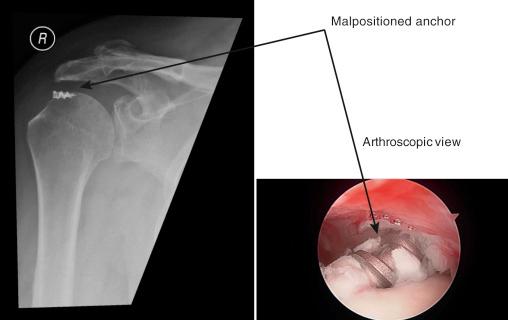
Goutallier classification ( Fig. 33.12 )
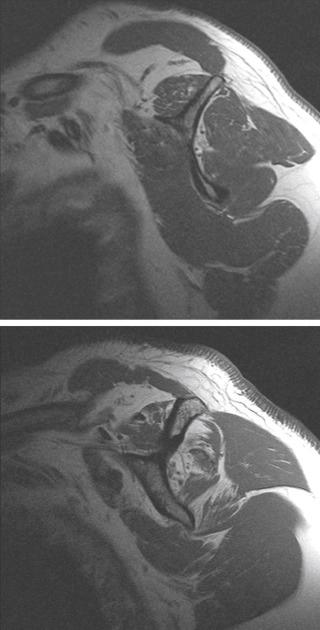
MR arthrogram ( Fig. 33.13 )

Pertinent neurological anatomy:
Axillary nerve: 5 cm from the lateral edge of the acromion
Musculocutaneous nerve: 5 cm distal from the tip of the coracoid
Suprascapular nerve: 2 cm medial to the superior glenoid
Know the innervation of the rotator cuff muscles and deltoid
Know the anatomy of the rotator cuff footprint ( Figs. 33.14–33.16 )
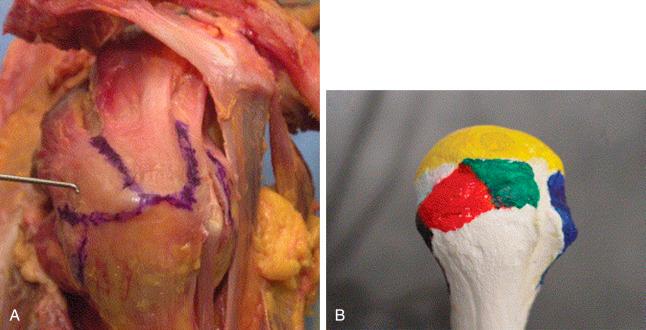

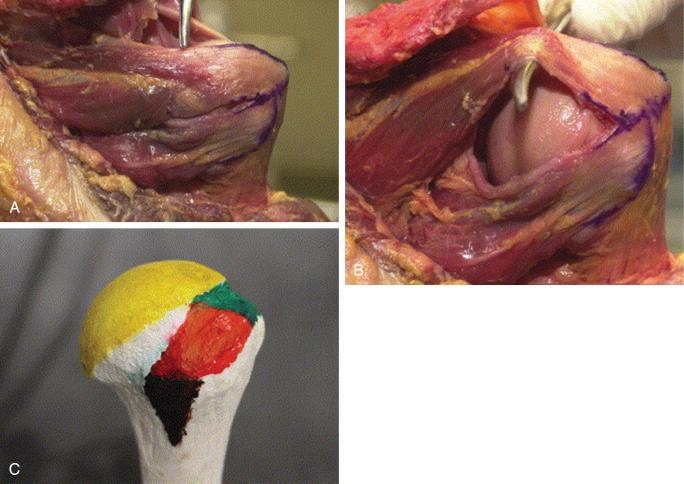
Symptomatic recurrent rotator cuff tear that has failed conservative management
Other causes of symptoms that have failed conservative management or that were not addressed at the time of the index procedure (i.e., AC joint degenerative joint disease, biceps symptoms, and so forth)
Become a Clinical Tree membership for Full access and enjoy Unlimited articles
If you are a member. Log in here